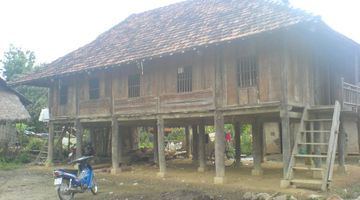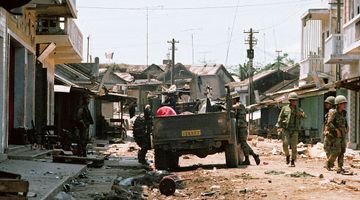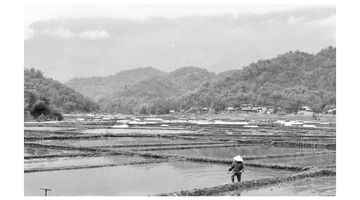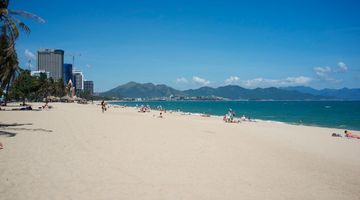Hue
About
Located right in the middle of Vietnam’s “S” shaped coastline, the citadel of Hue draws in eager visitors from across the globe. During the Vietnam-America war, the city fell victim to severe damage, adding to the immense history that keeps travellers designating it as a prime stop on the map. While Hue residents these days are trying hard to push forward from their war-torn past, the remaining glory of the city that was once tied to Imperial rule cannot be forgotten. History lovers beware: you might never want to leave this UNESCO world heritage site.
Why go
Hue is chock full of historic sights to see, starting with the Imperial Citadel, similar to the Forbidden City in Beijing, drawing most travellers in for at least a day. The emperor’s ancient tombs, located right in the middle of a beautiful forested area, are another mecca for history buffs. This intricate tomb site is almost like a maze, excellent for wandering around on a nice day.
Of course, there’s no better way to break up a day of sightseeing than relaxing with an authentic Vietnamese meal, which Hue does quite well. Strings of restaurants line the streets, and food markets like Dong Ba are jam packed with stalls selling everything from sour shrimp to beef vermicelli.
All in all, Hue is the perfect combination of history and culture; we love the vibe and countless tour options.
When to go
Picking the right time to visit can make or break your trip. Unless you love basking in some serious heat, plan to visit from October to March. While you might face some light rain during those months, you’ll likely find it refreshing, with temperatures mostly hovering between 20-30 degrees Celsius.
If your schedule will put you in this part of the country during the summer months, come prepared for temperatures in the high 30s. While you’ll have the benefit of clear skies on most days, you’ll also be experiencing some oppressive heat. If this is the case, wear light, moisture wicking clothes, and bring an umbrella to block the sun. Plan to take frequent breaks indoors, and always carry a water bottle.
Accommodation
You certainly won’t be lacking in hotel options after days spent touring the city. Hue offers accommodation from 1-5 stars, with prices as low as USD5 to higher end spas offering USD110 per night rates.
On the lower end, think budget guesthouse – similar to what you’d find throughout the rest of the country. However, for the service offered in Hue, we found that you’ll get slightly more value for your money.
On the other end of the spectrum, 5-star spas will run around USD100 per night for the ultimate luxury experience. Again, you’ll find better value for money and exceptionally friendly service when it comes to accommodation.
Food & drink
The history of Hue isn’t only found near the walls of the Citadel; a number of authentic meals served up across the city offer another window into the past.
One of our favourites is bun bo – a soup that can be found in both restaurants and the homes of locals who welcome hungry diners at night. This soup, similar to pho, comes packed with a long list of Vietnamese ingredients and is so popular that even food stalls and markets keeps their stocks supplied. Ingredients like congealed pig blood might scare wary travellers away, but for those willing to break outside of their comfort zone, we suggest adding Bun Bo to your list of must haves.
Getting around
Knowing the best way to navigate Hue is something that will make any trip a whole lot easier. While there are a number of ways to get from point A to point B, one thing we don’t recommend is renting a car. Getting into an accident due to the widespread reckless driving isn’t worth the convenience factor.
Instead, opt for easier methods like renting bicycles or hiring taxis. Bikes can be found all over the city for around VND22,000 (USD1) per day. Alternatively, metered taxis usually run less than that same cost per mile. We do advise making sure a taxi is metered before getting in to avoid any scams, though.
Getting in and out
Fortunately for travellers to this ancient city, widespread connections inside and out of Vietnam are readily available.
From within the country, the easiest, cheapest, and most frequent way to reach Hue is by bus. For travellers making their way across all of Vietnam, public or open buses run often between Ho Chi Minh City and Hanoi to Hue and can cost between VND270,000-350,000 to get from the middle of the country to either end.
Night buses are a popular option, with drop-offs in the early morning hours – just in time to get situated at your hotel and spend a full day exploring.
A slightly more expensive option is trains, which also run between Hue and the rest of the country. From Hanoi, tickets range from about VND500,000-1,140,000 (USD30-USD50), depending on the class and seller, with the journey lasting around 12 hours.
From Ho Chi Minh to Hue, the trip lasts closer to 20 hours, with tickets ranging from VND800,000-VND1,400,000 (USD40-USD60). Different bunk options are available, and the cheaper the ticket, the harder the bed. We opt for the soft sleepers in order to wake up feeling fully rested and ready to take on the next day.
With trains it’s important to note that you can buy tickets online in advance (recommended!). Though shorter routes such as Hue to Da Nang will only open for sale a week or two prior to departure, you still can book them with 12Go.asia a year prior to your trip.
If you’re looking for the quickest way to travel, plan to fly into Hue’s international airport, Phu Bai (HUI) from outside or inside of the country. Daily flights run from both Ho Chi Minh City and Hanoi to Hue. We found one-way tickets from Ho Chi Minh to Hue for as low as USD20, with flights lasting under an hour and a half, and from Hanoi to Hue for around USD45, with a flight time of 1 hour and 10 minutes – both with VietJet Air.
Keep in mind that while cheap tickets can be found, flights are often cancelled due to weather in the rainy months.
Safety
Any smart traveller knows to be aware of safety concerns when travelling somewhere new; fortunately for visitors of Hue, there’s not much danger to be had. As with any city, it’s always smart to stay in lit and crowded areas, but Hue doesn’t tend to experience much serious crime. The main thing to watch out for is petty theft, so be sure to keep your belongings packed up, close by, and within reach. Especially in the crowded markets, don’t let wallets or purses become an afterthought. Beyond that, enjoy exploring and trust your gut.





















































